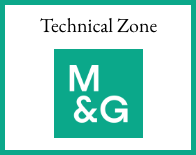Policy Statement PS20/06, published in June, introduced a raft of significant changes to the rules around pension transfer advice. Some took effect on 15 June but most of the changes come into force on 1 October 2020. ATEB’s Steve Bailey provides a summary of the key points.
Ban on contingent charging
Unless the client is in serious ill-health or serious financial difficulty, advisers must now* charge clients for transfer advice on a non-contingent basis.
Just to be clear, that means charging a fee for transfer advice that is the same regardless of whether the recommendation is to transfer or not and that firms collect whether or not the transfer goes ahead.
* Transitional arrangements are in place for pipeline business. Where a firm can demonstrate that a client agreed contingent charges terms before 1 October and started work before 1 October, the firm may charge contingently, provided a personal recommendation is given before 1 January 2021 (i.e. within 3 months of the ban being implemented)
Basis of charging
Firms can still set their own charging structure for transfer advice provided charges are non-contingent.
Generally speaking, the position is that all charging should be consistent. However, it is possible to have different charging levels where this is justifiable. Firms can charge different amounts to different clients where there are genuine and legitimate reasons for the difference. For example, if the firm has set out different charges in its charging structure for different types of client, such as for existing clients, introduced clients or those with multiple schemes.
Firms must not charge more for ongoing advice on investments that were funded by a pension transfer than they would if the funds came from another source.
Abridged Advice
From 1 October 2020, firms advising on pension transfers have the option of providing Abridged Advice. Abridged Advice can be thought of as a kind of ‘super-filter’, facilitating, for some clients, a recommendation as to whether a transfer might be appropriate or not, at a lower cost than would apply to a full advice process, or even at no cost.
Abridged advice enables an adviser to:
- Provide the client with a personal recommendation not to transfer or convert their pension; or
- Tell the client that it is unclear whether they would benefit from a pension transfer or conversion based on the information collected through the abridged advice process. The adviser must then check if the client wants to continue to full advice, and if they understand the associated costs.
Firms are not obliged to provide abridged advice, but if a firm chooses to do so, the advice needs to be provided or checked by a Pension Transfer Specialist (PTS).
Consideration of workplace pension schemes (WPS)
When a firm makes a transfer recommendation, they must first consider using an available WPS as the destination for any transferred funds or demonstrate why a recommended alternative plan is MORE suitable than the default arrangement in an available WPS.
Firms are only required to consider the most recently joined WPS although they can choose to also consider a previous WPS if it would be more appropriate to do so, e.g. if the most recent WPS does not accept additional contributions or if a consumer is not an active member of a WPS at the time.
New documentation
There are two new documents required.
- Personalised charging ‘communication’. Before a client chooses to proceed to full advice, they must be issued with a ‘Your personalised charges’ statement ‘in writing’ (which includes non-paper methods of communication). The document must be personalised to the client, to distinguish it more clearly from the firm’s generic adviser charging structure. This can be a very simple document as can be seen from the example on p22 of GC20/1.
- One-page summary / suitability reports. Firms are required to include a one-page summary at the front of all transfer suitability reports requiring a PTS. For examples of both abridged and full advice one-page summaries, please see the Annex 2 of PS20/06 of (page 65).
Firms will need to follow the prescribed format and methodology in preparing their reports.
Otherwise, the one-page summary must provide the required information on …
– Charges disclosure;
– The adviser’s recommendation;
– The risks of the pension transfer;
– Ongoing advice.
… and provide space for the client to sign to confirm understanding and the intended course of action.
Client understanding
In addition to the client signatures on the one-page summary, firms must obtain evidence that the client can demonstrate they understand the risks of proceeding with a pension transfer before finalising the recommendation and keep a record of this evidence.
If firms recommend a transfer but cannot demonstrate that the client understands the advice and the risks of proceeding, firms need to be prepared to change the advice and recommend that the client does not transfer.
An example of good practice can be found on page 64 of GC20/1.
Other aspects
There are quite a few other aspects covered by the new rules, including but not limited to:
- New CPD requirements. PTSs must now undertake 15 hours of CPD each year in addition to any other CPD they undertake, with at least 9 of these hours being structured and at least 5 of the 15 hours provided by an independent provider external to any firm that employs or contracts services from the PTS. The new CPD requirements are effective on 1 October 2020. Note that the recent relaxation permitting carry over of CPD in case of COVID-19 issues does NOT apply to PTS CPD.
- Cash flow models. Cash flow models remain optional. However, where used, they must be presented in real terms. The modelling should include a stress test, e.g. by illustrating the effect of a significant fall in the markets soon after a client starts taking withdrawals from a fund.
- Unauthorised payments. HMRC’s rules on unauthorised payments still prevent payment for transfer advice being made from a different pension product.
- Estimated transfer values. Firms can give provisional advice where only estimated transfer values are available, in cases when ceding scheme arrangements are expected to be changed or replaced by another scheme.
In these circumstances, the ceding scheme usually requires the scheme member to provide an indicative decision about opting into the changed or replacement arrangements. The scheme then uses this information to determine final transfer values. Members need to be able to make an informed decision based on the estimated transfer value.
Our View
Most of the new changes outlined in PS20/6 came into force on 1 October 2020, (the remainder having already taken effect) and firms should ensure they understand the implications, implement any required process and documentation changes and ensure all affected advisers and PTSs are fully aware of the new environment for transfer advice.
For firms using ATEB Suitability report writing software the required changes are in place as from today.
Firms not using ATEB Suitability need to ensure that suitability reports reflect the new requirements.
ATEB has vast experience of helping firms to implement a robust and compliant transfer advice process. We can help you too.
Recommended action points
1. Ensure that your pension transfer process accommodates the changes announced in PS20/6;
2. Immediate decisions are required in relation to:
– which of the optional process stages will be implemented;
– who can provide the advice;
– applicable fee scale for Abridged Advice and Full Advice;
– process for identifying/evidencing clients that meet the carve-out tests;
– pro bono advice
– policy on insistent clients;
– and more.



































